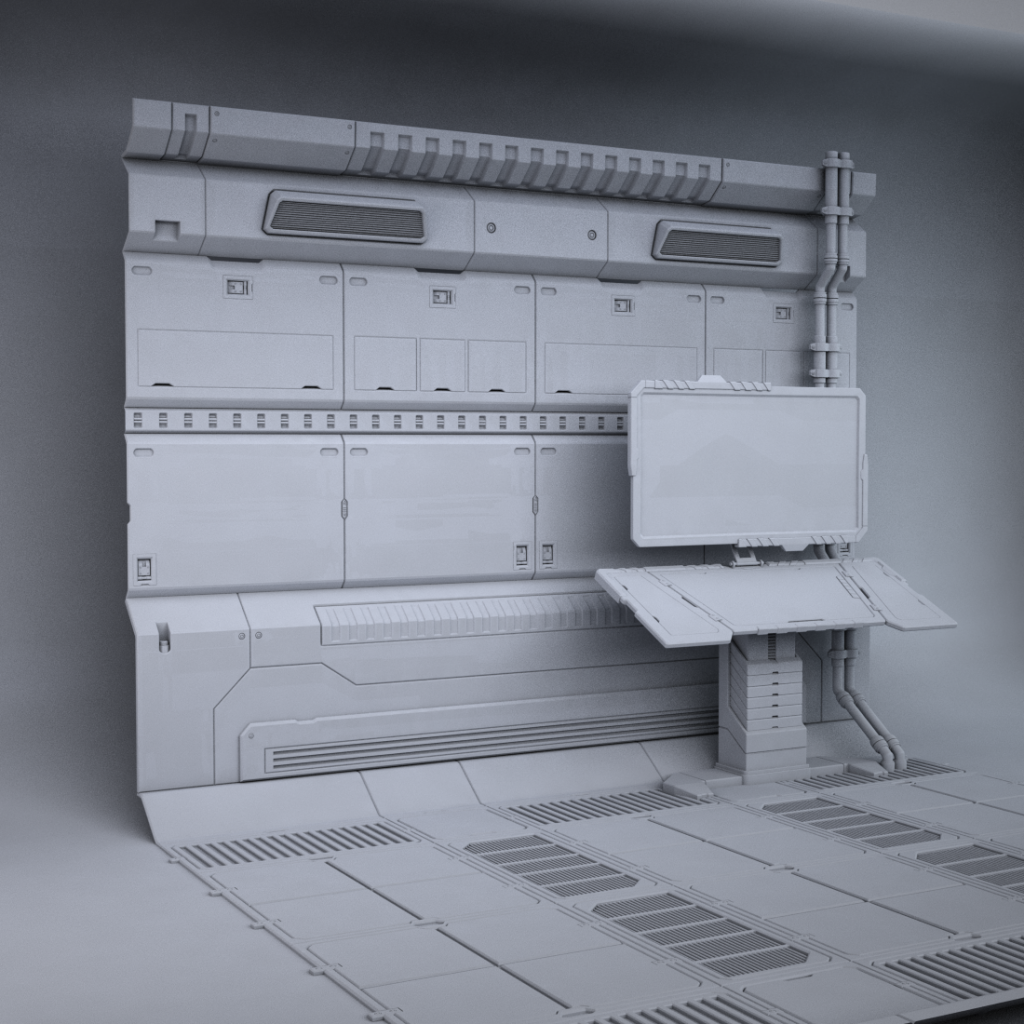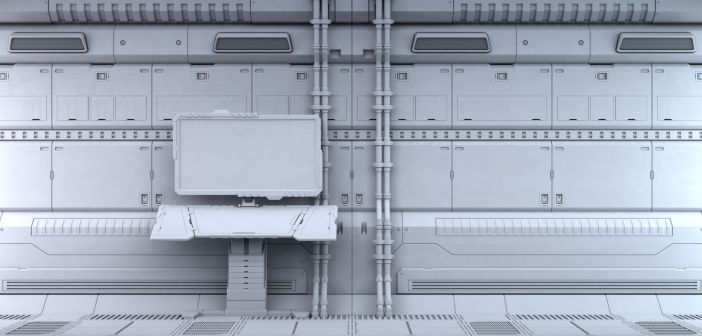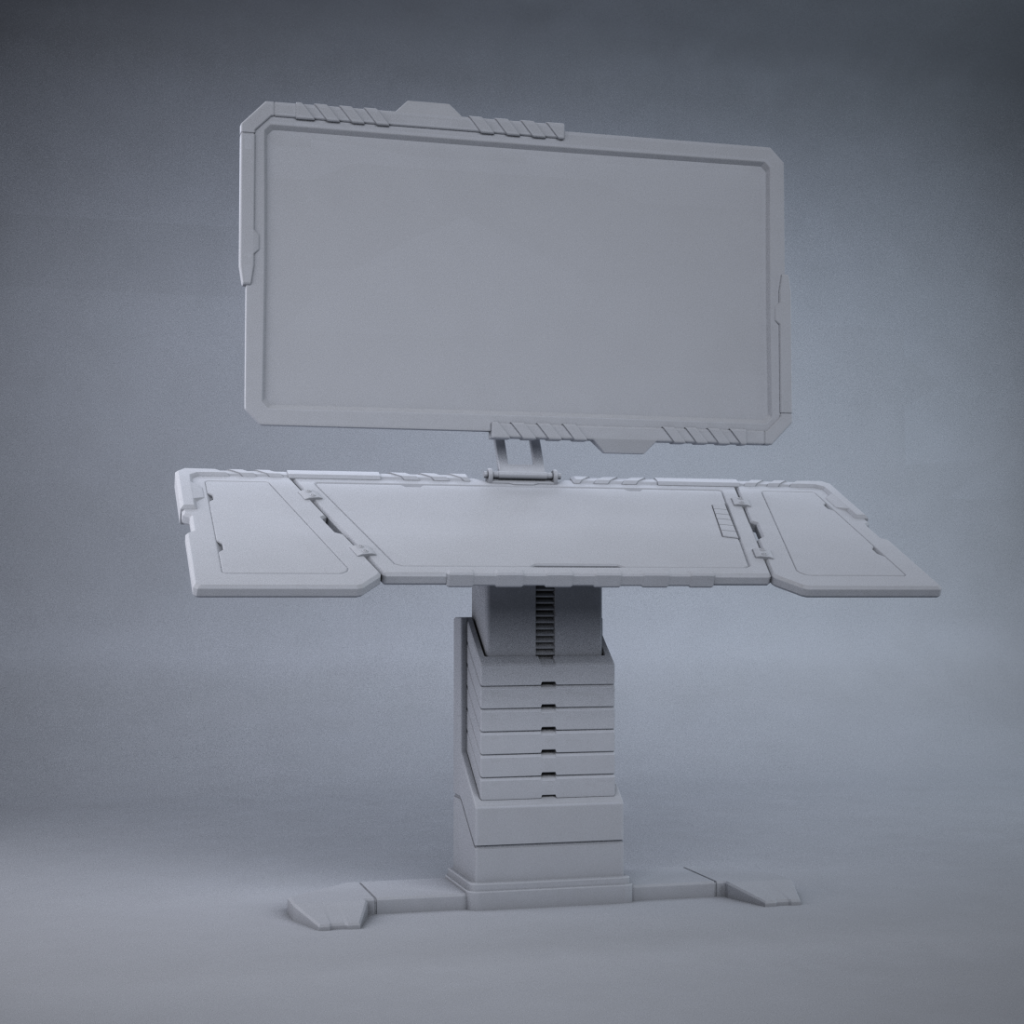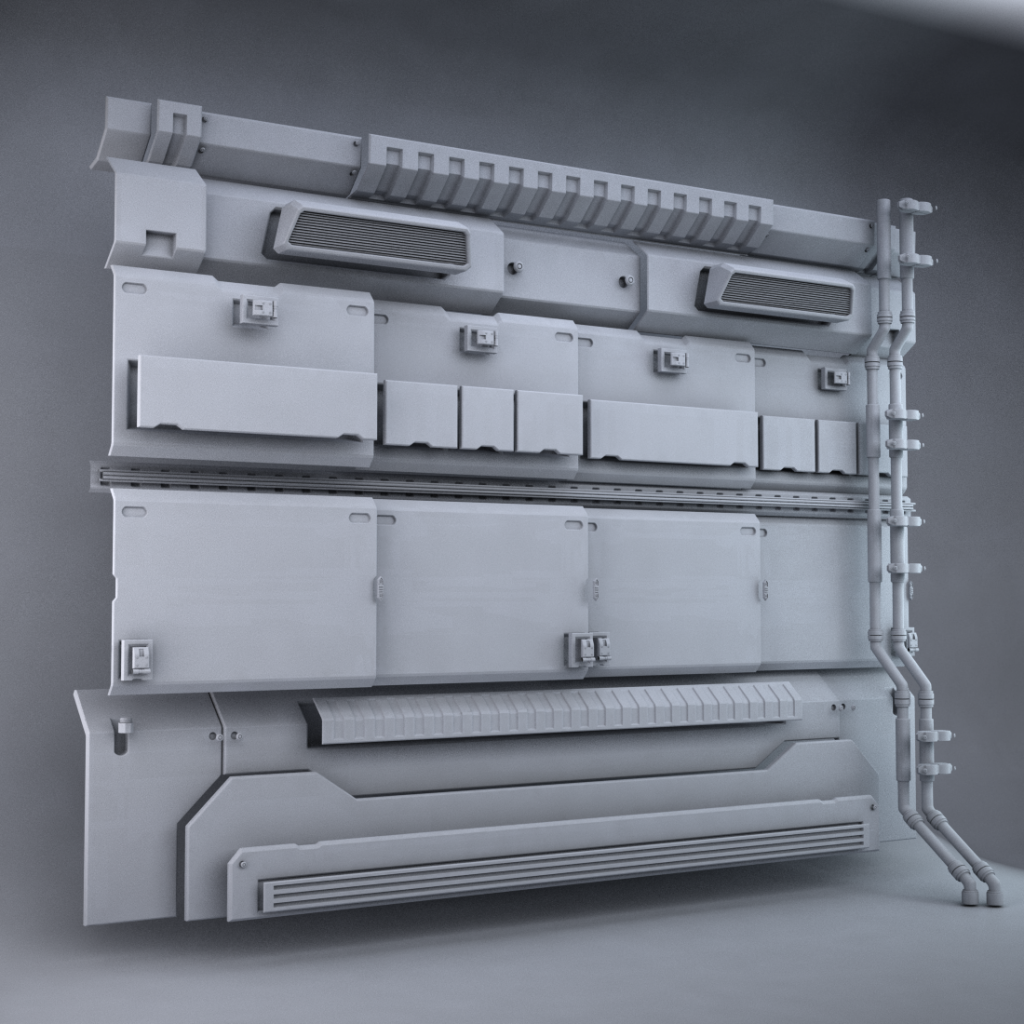Modular level design is one of the most frequently used terms in professional video game production. This article gives an insight into dealing with modular geometry and explains the basic requirements for flexible, generated, complex 3D environments. This is a process which all newcomers in the professional games industry can profit from and can even pose a complex challenge for diehard professionals.
Text & Photos: by Hendryk Jaroslawsky;
The term modular level design is inseparable from professional production of interactive 3D content and firmly anchored in the foundations of production. If you take a look at the history of the gaming industry you will find numerous excellent examples for the modular construction within fictitious worlds. Super Nintendo’s Mario and The Legend of Zelda are of particular importance here. The reuse and varying formation of the defined number of level elements generated at this time allows for the creation of areas which are playable for as long as possible and this has, at least in principle, not fundamentally altered to this day. Playable worlds constantly grow and a wealth of detail is exponentially added as software and hardware progressively develop. Constructing levels and generating the necessary geometry are no longer in the hands of a sole individual.
Within the production this is structured into various sections and tasks. Increasingly larger and more detailed worlds require more content accordingly into order to fill these worlds. Combined with the high expectations of consumers, these circumstances require a qualitative and time-efficient solution.
The ideal situation is to produce many different results using high quality content generated only once. Due to the high efficiency the exclusive production of areas which are found in the direct view field of consumers in this context and they then must fulfil their quality requirements.
Choice of module sizes
The basics of effective modular level design can be divided into three areas: consistent module size, optimal use of the grid and a precise concept. The module size of the combined geometry is dependent on the characteristics and the background story of the scene. If the consumer experiences the town from a birds eye view it is possible to see individual town districts. These modules then consist of a predetermined number of various building geo-metries. If the aim is to experience the environment from a first or third person perspective it is more logical to separate the floors of a building and to treat these as individual modules. In these circumstances modularity means that the floors of a building form a third different building in combination with the floor of an additional building.
This process can be applied to all environments with similar cyclic elements. The choice of module size also is im-portant in determining the scene’s degree of detail.
Working with grids
The choice of module sizes is directly connected to use of the grid. Virtually all modern game engines and all premium 3D software have an integrated grid. Continual use and exact adherence to the grid are indispensible for a modular level design. At the beginning of the creative process first clarify which software the underlying grid is based on and standardising this. One evaluation option to guarantee consistent proportions is to use test geometry. A cube with an edge length of one metre, which will be imported into all applications integrated into the workflow, guarantees that even complex geometry will always be displayed at the correct scale. If the technical requirements are standardised it is im-portant to consistently adhere to the grid and to only work with exact grid units. If there is software that simulates the building height with 256 units, the aim is to produce additional details with 128, 64 or 8 grid units. It is possible to use real dimensions in the creative process using this procedure. Real measurement data can be converted to its own grid and automatically forms credible dimensions within the selected game engine.
In this way using a well thought-out grid removes the need to estimate dimensions and repeatedly test the geometry. Well documented dummy scenarios, shared throughout the team serve to ensure significant time savings and prevents complications when merging separately generated areas together.
The concept phase
A well thought-out concept is a prerequisite for specific application, the fundamental factors of modular level design. The area to be designed is subdivided into the individual elements, regardless of its background. Particularly within the concept it is not the size of the necessary modules which is decisive, but rather identifying the geometry which is used as a basis for constructing levels.
This means the difference in the number of the building types which are necessary in order to the provide a credible experience for consumers. The next logical question is exactly how many modules a building needs to be comprised in order to make it credible and efficient. If the environment is sensibly separated and the module size of the contained areas are clarified, all possible special cases which might occur also should be paid attention to. Here it is important to discuss whether for example additional levels of disrepair are necessary for the various buildings or if a river should come to an end within an area. In both cases additional unique geometry is necessary in the form of a waterfall or different wall sections. Current products generated by the industry have differing consumer expectations depending on the genre.
During the concept phase it is essential to determine to what extent backtracking or the use of hidden level barriers is intended. Such unsightly and conditionally used elements can be essential due to budget and time constraints. These things are to be considered, discussed and planned during the concept phase.

3. View of a complete module from the construction of the title
image. Only areas which are in the viewer’s direct field of vision
are modelled.
Absolute flexibility
The fastidious work with the grids and a bindingly clear concept can make the modular process seem very static and inflexible. In everyday practical use it is a dynamic and highly flexible system. It is important in the design process to identify the elements which are crucial for the environment’s design language. Additional duplicates can be created on the basis of these “core/parent elements” which can be elaborated upon in various forms.
It is never to early to start working on the detail. So it is more sensible to roughly divide a building into its floors and to test the resulting modules with different variations as it is to create the windows and additional subdivisions for each individual floor first.
Make the variants conform to the required design language and allow them to come together incompletely, are able to with smaller grid units to also elaborate on smaller levels of detail. Absolute flexibility is the overall aim of a modular level design. Allow objects and modules to reflect and rotate on all axes and to snap together and apart then construction inside the game engine will follow the classic LEGO principle.
The “pattern problem”
Depending on an individual module’s level of detail these must form a perceivable pattern If particularly concise geometry is only reflected and consistently connected together, the resulting pattern is also identifiable for consumers. After all important elements in an environment have been defined, it is necessary to disguise the underlying pattern.
Repeating elements can also achieve other effects with the varied use of light and shade. Objects which can disguise or vary transitions can be helpful here. For example vegetation growing on a building or different types of derelict brickwork can be placed in many different positions on the facade of a building. If it is insufficient to embellish the module with additional elements it is not complicated to subsequently swop modules thanks to the grid.
The impression of an observable pattern is quickly generated, especially when beginning to construct a level.
All additional formative elements and the basic lighting should be implemented instead of directly modelling additional geometry and swapping modules. The resulting impression of the scene can have crucial differences.
Asymmetrical elements
It is sensible to interrupt the modular process if the area is equipped with all cyclic elements and the scene’s significant design language can be recognised. Good design can also result from asymmetry and particularly concise unique objects in addition to using cyclic modules.
This should be planned as part of the concept phase. These specialised components must also now be integrated into the remaining time budget. Even if you don’t embody any recurring elements it is important to model these using the grid. If these elements also fit on the grid, they can be easily adapted into a game engine using the much sought-after LEGO principle.
A practical example
The accompanying images are a practical example of the use of modular level design. This composition is comprised of one module, a corridor segment which is divided into the following modules: floor, ceiling and wall. These are then further divided into sections depending on the required level of detail.
So it is possible, for example, to swap two grates for a four section plate module within the floor module. This example is based on a 1024×1024 grid which is divided into 256 sections each with 64 units.
Modular level design is not possible in every project but it offers various technical processes and approaches which can be very helpful for any project if taken in isolation.
It is generally recommended to consistently use the available types of grids. A good concept of your own level construction gives an overview of the necessary total volume of the environment and always helps you not loose sight of the most important things.
With the unwavering increase in consumer demands for fictitious worlds resource planning is crucial to get the most out of your own workflows. In doing so there is a chance that your own design will culminate in a unique experience.
About the author
Hendryk Jaroslawsky, born in 1990, currently freelancing in Hamburg. He has produced multimedia content for various end devices since 2006. His creative process is always accompanied by interactive 3D content in addition to classical advertising products and web applications. Since 2012 he has focussed his creativity on the gaming industry and in 2013 will obtain his Bachelor’s degree from SAE Hamburg.



